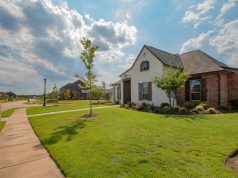With the 26th Conference of the Parties — or “COP26” as it is more commonly known — dominating the headlines, there is increasing pressure on all industries in the UK to play their part in achieving net-zero carbon emissions by 2050.
According to research by the UK Green Building Council, the construction industry contributes at least 10% of the UK’s carbon dioxide emissions. It remains largely up to a developer’s conscience whether they invest in sustainability, but there is growing consumer demand for eco-homes. Many buyers will soon come to expect certifications such as BREEAM — Building Research Establishment’s Environmental Assessment Method — that demonstrate a commitment to protecting the environment both in terms of building design and the construction process.
Property developers who lag behind when it comes to reducing their carbon footprint are at risk of diminishing their brand and losing sales. So, how can you minimise carbon emissions from your next development?
Implement Green Energy Solutions
Design renewable energy sources into your new build from day one. Most carbon emissions come from living in a property — lighting, heating and air conditioning. Include features such as solar panels, mini wind turbines and heat pumps to make your new properties as energy-efficient as possible.
For potential buyers, green energy solutions offer the added benefit of lower bills. There may even be the opportunity to earn a small income from selling back any surplus energy produced through solar panels to the government via the Smart Export Guarantee (SEG) scheme.
Invest in Smart Technology
Smart tech allows homeowners and developers to access the data they need to identify energy inefficiencies and implement solutions. Sensors and remotely controlled heating and lighting systems can be used to turn off the supply when rooms are not in use. This not only reduces the building’s carbon footprint but also slashes energy costs.
In large buildings, such as business premises, building management systems (BMS) can reduce carbon emissions by up to 30%. The increasingly accurate monitoring capabilities of BMS ensure that your building operates in the most energy-efficient way.
Use Recycled and Sustainable Materials
Choose “carbon sink” low-carbon and recycled building materials wherever possible.
Carbon sink materials absorb more carbon from the atmosphere than they release. Most of these materials come from harvested wood and can be used for various purposes, including flooring, cladding, doors, window frames, beams and more.
If it is not possible to use carbon sink materials, low-carbon products are the next best option. Examples include low-carbon bricks, recycled metals, green concrete and eco-friendly tiles.
“Bonus” Eco Features
Think beyond the design of your new building to maximise the green credentials of your development. Install a bike rack and a charging point for electric cars. Create a living wall or roof and space for a mini allotment in the garden. Consider any ways you can add value and encourage the new owner of your property to not only buy green but to live in an eco-friendly way too.
Offset Your Carbon Emissions
The best way to reduce your carbon footprint as a developer is to design properties built with sustainable materials and include green features such as solar panels.
However, if there are some areas where it is impossible to choose an eco-friendly option, carbon offsetting is one way to mitigate the impact of your development on the environment. There are lots of projects to choose from. Some remove carbon from the atmosphere, while others seek to avoid carbon emissions altogether. By purchasing carbon credits, you can offset the impact of your building on the planet.
Why Invest in Reducing Carbon Emissions?
Adapting an existing energy-inefficient building to reduce its carbon footprint is generally much more difficult, time-consuming and expensive than it is for developers to create a green building from scratch. This gives developers of new properties a competitive edge as demand for eco-friendly properties grows.
The housing market is increasingly competitive and consumers have their pick of new property developments to choose from. Any way you can provide more choice and make buying and moving house easier for people will boost sales. Developers of new builds can offer a lot more added value than sellers of existing homes — input in the design, choice of fixtures and fittings, help to buy schemes such as house part-exchange and smart designs that offer a more eco-friendly way to live. Make your next development stand out by providing potential buyers as much choice as possible and making the decision to buy from you an easy one.














